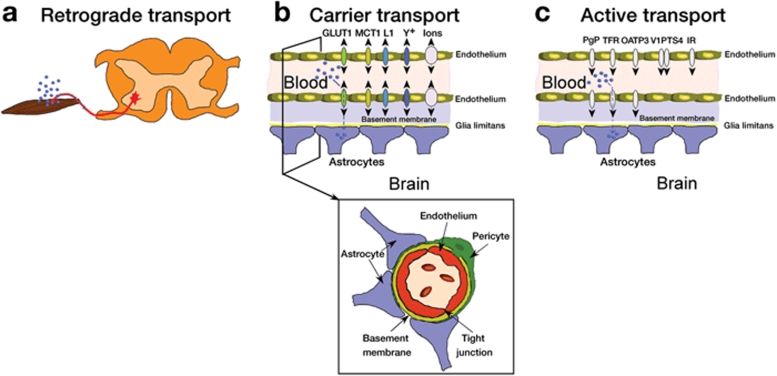Figure 1.
Schematic of potential AAV access to the CNS from the periphery. (a) Retrograde transport. Infection of nerve endings or axons allows retrograde transport of rAAV and transduction of the mother soma. The schematic depicts a red motoneuron exiting the ventral spinal cord and viral particles infecting at the neuromuscular junction and being transported back to the soma. Although there has been some success with this method, the efficiency and replicability have been low. There are also several “weak spots” in the BBB that may allow better retrograde transport, such as the nasal epithelium leading to the olfactory bulb, the hypothalamus via intraventricular administration, and the area postrema in the medulla. (b) Schematic of carrier transport through the adult BBB. There are numerous channels that actively transport important molecules from the blood into the brain that might be candidate AAV9 receptors. Several candidates are depicted, but this is not a complete list of possible transporters. This schematic is based on Zlokovic.2 GLUT1, glucose transporter; L1, transporter for essential amino acids; MCT1, monocarboxylate transporter 1 for lactate; y+, transporter for cationic amino acids.2 There are also active transporters for various ions as indicated. (c) Schematic of active transport through the adult BBB. In addition to active transport, there are also proteins that bind molecules in the blood, thus permitting these complexes to cross into the brain. Again, the carrier systems depicted here are not a complete list, and the schematic is based on Zlokovic.2 IR, insulin receptor; OATP3, organic anion transporter 3; PgP, multidrug resistance P-glycoprotein; PTS4-V1, peptide transport system 4 and vasopressin receptor 1 transport arginine-vasopressin; TFR, transferrin receptor.2

